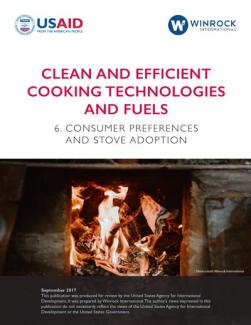Clean and Efficient Cooking Technologies and Fuels Toolkit
Background, guidance, importance, assessment, the confounding effect of stove stacking, and how and why to monitor stove use.
Cleaner, more efficient cookstoves have the potential to generate a variety of social, economic and environmental benefits, but these benefits can be achieved only if consumers use these stoves correctly and predominantly. The stove’s ability to meet consumer needs and expectations is critical both to ensure use, and to build market demand.
Best Practices
- Gather consumer research data from existing studies and through household trials, if necessary, to determine whether available stove options are a good match for your target consumers. If not, solicit consumer input to help design or modify a stove with attributes that better meet the needs of your target market.
- Build consumer education into your program, through product and social marketing, to ensure that end users understand how to use the new fuel/ technology and do not hold unrealistic expectations.
- Monitor stove usage of a representative sample of users via sensors to collect unbiased data on whether they are actually using the stoves, and to what degree; follow-up with consumers to learn more and resolve issues that limit the consistent use of improved stoves.
- Ensure the supply chain can provide after-sales service. Troubleshooting support, repair shops, warranty fulfillment and availability of replacement parts are critical to reduce risk for the consumer, build brand loyalty, and ensure that consumers continue to use cleaner cookstoves and don’t revert to traditional stoves/fuels.

